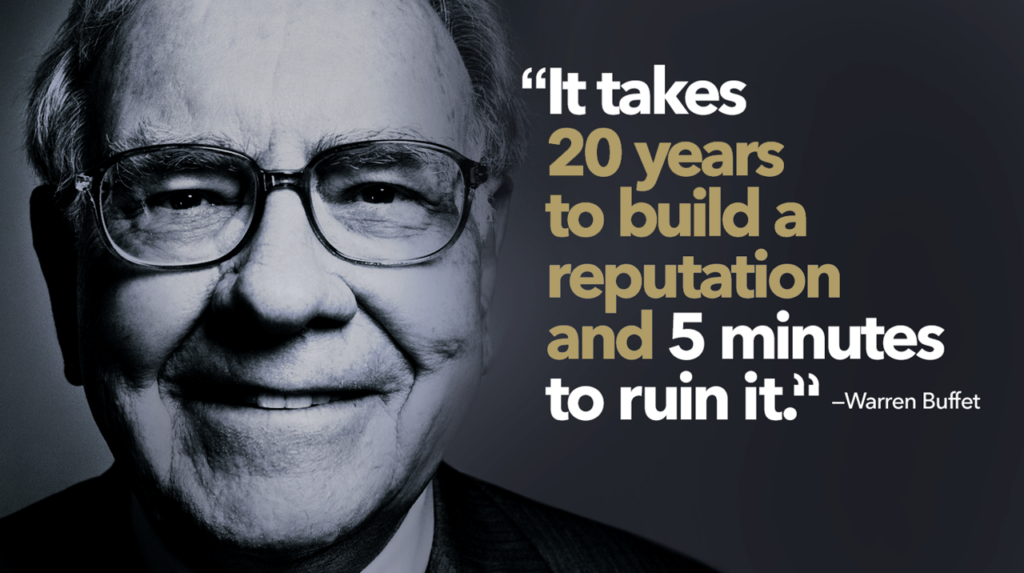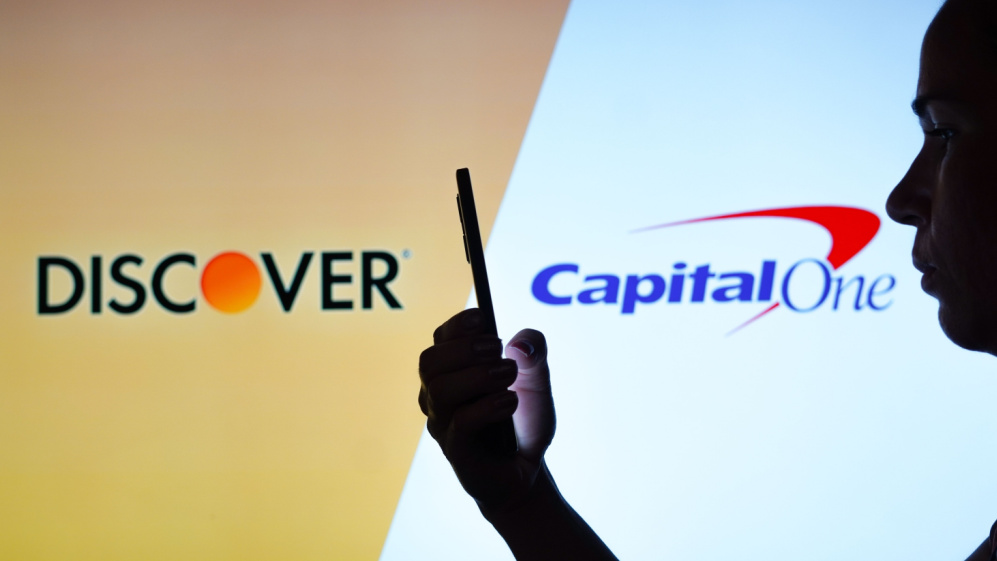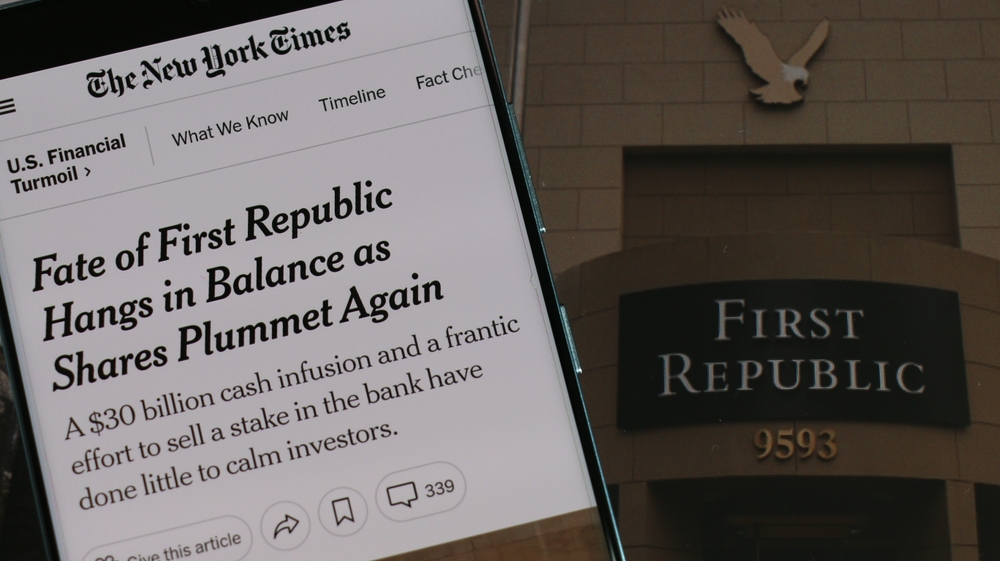Fallston Group Activates Southeastern Region Location

Fallston Group, a distinguished leader in crisis leadership, public relations, strategic communications, and reputation management, announces the inauguration of its presence in Tampa, Florida, now serving the Southeastern region of the United States. The strategic expansion amplifies Fallston Group’s commitment to assisting organizations (proactively and reactively) with crisis leadership services, equipping organizations who must navigate turbulent times with precision, clarity, and resilience. Fallston Group, which works with private, public, and nonprofit organizations, as well as individuals in need, has been building, strengthening, and defending reputations since the company was founded 15 years ago in Baltimore, Maryland. Fallston Group is a renowned authority in crisis leadership and strategic communication. The regional team brings more than two hundred years of combined professional experience to assist clients in effectively managing their decisions, narratives, and brands in the most challenging circumstances. “If you don’t tell your story, someone else will. And when someone else tells your story, it certainly won’t be the story you want told,” remarked Rob Weinhold, Chief Executive of Fallston Group. “You don’t spin your way through a crisis; you lead your way through. While counterintuitive, crises are growth opportunities not to be feared.” Weinhold adds, “We know how to turn short-term adversity into long-term advantage, saving clients time, money, customers, careers, and in the worst of scenarios, freedom, and lives. It is not a matter of ‘if’ but ‘when’ crisis strikes, as anyone with an internet connection and/or recording device can wreak havoc on your brand. The new southeastern regional presence, centered in Tampa, Florida, signifies Fallston Group’s unwavering commitment to delivering exceptional services tailored to client needs, particularly in crisis leadership, strategic communication, public relations, and media training. Whether guiding businesses through reputational crises or creating organizational muscle memory to enhance crisis preparedness, Fallston Group remains a trusted partner dedicated to safeguarding client reputations and valuation. The firm operates at the critical intersection of leadership, strategy, and communications. “We are thrilled to broaden our footprint,” continued Weinhold. Our team will work closely with leaders in the region, equipping them with the tools and strategies necessary to navigate any sensitive, adverse, or crisis-oriented issues.” Fallston Group’s expansion represents a significant milestone in the company’s 15-year trajectory, reflecting its ongoing commitment to excellence while supporting its domestic and international clients.
Fallston Group’s Core Principle – “Reputation leads to Trust and Trust leads to Valuation.”

Few names resonate with as much reputational equity as Warren Buffett. Often recognized for his famous quote “It takes 20 years to build a reputation, and 5 minutes to ruin it.” At the heart of Warren Buffett’s enduring success lies a profound dedication to his craft, one that extends far beyond mere financial prowess. As we say at Fallston Group – “Not all currency is financial.” It’s a dedication rooted in the cultivation and preservation of your reputation, one built on trust, transparency, and ethical principles. Central to Buffett’s reputation is transparency. Berkshire Hathaway’s annual shareholder letters, eagerly awaited by investors worldwide, are a masterclass in candid communication. Buffett doesn’t shy away from discussing failures or mistakes, viewing them as opportunities for learning and improvement. This transparency fosters trust and reinforces his reputation as a reliable steward of capital. Buffett’s philanthropy is as legendary as his investment prowess. His pledge to donate the majority of his wealth to charitable causes is a testament to his commitment to society. By leveraging his wealth for the greater good, Buffett further burnishes his reputation as a responsible global citizen, leaving a legacy that transcends financial success. Warren Buffett’s name will forever be etched in gold. Yet, beyond his staggering wealth and market acumen lies a deeper lesson – the importance of reputation. Buffett’s success isn’t just measured in dollars but in the trust and respect he commands. In an age where reputation can be fleeting, Buffett’s enduring legacy serves as a beacon of integrity and a timeless reminder of the enduring value of a sterling reputation.
Cap One – a Capitalist’s Drive for Growth

Reflecting on the recent announcement that Capital One plans to acquire Discover, it is impressive to see the strategic positioning and drive for Capital One to continue its growth patterns. Capital One has a good track record for growth, as it boasts that it has exceeded numerous growth targets since its creation in 1994. This type of track record doesn’t happen by accident. It takes a clear strategy and, most importantly, a dedicated focus on execution. An effective short-, mid-, and long-term strategy is rooted in having a clear understanding of and focus on your company’s unique advantages, which then translates to a winning proposition in the marketplace. Also, it is important to plan for execution to meet organizational goals. This requires a commitment to focus and relentless attention on many execution details daily to achieve success. Then, enterprising, growth-minded companies drive growth and set even higher goals to achieve success within their marketplaces. This is what brings Capital One to the plan to acquire Discover….an internal strategic drive to move on to the next step of change in performance for the company and its investors. By acquiring Discover, Capital One moves strategically into a new world where they can compete with Visa and Mastercard to provide a globally competitive payments network while also capturing numerous other synergies in the card business from the combined companies. I bet Capital One delivers on its aspirations since they have a demonstrated track record for solid execution – the most important predictor of success being past performance. More competition in the card payments field should also benefit retailers and consumers! Does your organization have an established strategic plan and leveraged pathway to success? If not, contact us to learn more about the various models we implement to help organizations activate their mission, vision, and values.
Hostage Negotiations – A Blueprint for Everyday Life

Just a few short weeks ago, Fallston Group was honored to have delivered the opening keynote at the National Tactical Officer’s Association’s (NTOA) Crisis Negotiations Conference in Scottsdale, Arizona. There were more than six hundred crisis negotiators sharpening their craft to diffuse and deescalate life’s most difficult situations and save lives. Yes, these are ordinary men and women thrust into extraordinary circumstances at a moment’s notice. It’s an awesome responsibility where these chosen law enforcement strategists must play games of chess, not checkers. In our daily lives, the traits that define successful hostage negotiators can serve as valuable guiding principles, helping us navigate challenges, communicate effectively, and build stronger connections with those around us. Don’t we need more human connection in today’s world? Let’s look at some of the key attributes needed to competently manage this high-stakes game and normal everyday life. Communication: Mastering the art of effective communication is a universal skill that transcends crisis scenarios. Whether in personal relationships, the workplace, or community interactions, the ability to express oneself clearly and assertively fosters understanding and mutual respect. By articulating thoughts with precision, we can enhance our capacity to influence positive outcomes. Let’s not forget the most important part of the communication process is the ability to be an effective listener. Empathy and Emotional Intelligence: In the fabric of everyday life, empathy and emotional intelligence form the foundation of meaningful connections. Understanding the emotions of others allows us to build stronger relationships and navigate conflicts with compassion. In family dynamics, friendships, and professional settings, the ability to empathize fosters a sense of unity and cooperation. Empathy is also the single attribute that sets the best leaders in the world apart from others. Adaptability and Flexibility: Life is inherently dynamic, and the ability to adapt and be flexible is paramount. Whether facing unexpected challenges at work, adjusting to changes in personal circumstances, or navigating shifting priorities, embracing adaptability ensures resilience and the capacity to thrive in the face of uncertainty. I had an old sergeant once tell me, ‘The only thing in life that’s constant is change. As soon as you realize this, you’ll be better off.’ I think he noticed my inflexibility at such a young age! Patience and Resilience: Every journey comes with its share of setbacks and obstacles. Patience and resilience equip us to endure hardships, learn from experiences, and persevere in the pursuit of our goals. These traits are invaluable in maintaining composure during challenging times and bouncing back with newfound strength. Yes, it is hard to wait and be patient in today’s ‘hurry-up’ world, but time is often the most important asset you have on your side. Strategic Thinking and Decision-Making: Strategic thinking isn’t limited to boardrooms and crisis situations; it’s a skill that enhances decision-making in all aspects of life. Whether planning personal goals, managing time effectively, or addressing complex issues, strategic thinking guides us in making informed choices that align with our long-term objectives. Research shows that people would rather follow someone who makes a wrong decision than no decision. It’s imperative to create your own future by making decisions, realizing that not all of them will be right. That’s okay; it’s how we learn and become better tomorrow than we were today. The traits of successful hostage negotiators are not confined to high-stakes scenarios. They are principles that, when integrated into our daily lives, empower us to communicate effectively, build meaningful connections, navigate challenges with grace, and make strategic decisions that contribute to our overall well-being and success. By embracing these traits, we cultivate a mindset that not only enriches our individual experiences but also positively impacts the world around us.
Thriving in the Fire: The Complex World of High-Profile Collegiate Athletes in the Era of NIL and Sports Betting – Is it Too Much?

Welcome to the epicenter of collegiate sports, where the pursuit of excellence intertwines with the invisible threads of expectation, social media scrutiny, and the burgeoning realm of sports betting. In Fallston Group’s latest blog, we unravel the multifaceted challenges faced by high-profile collegiate athletes, exploring the relentless pressures that have become synonymous with their pursuit of greatness and financial rewards. The Weight of Expectation: Imagine the weight of expectations from coaches, teammates, the student body, fans, corporate interests, and the media—it’s a pressure cooker where success isn’t just desired; it’s expected. There is no question about the mental and emotional toll this constant scrutiny extracts from athletes striving to meet soaring expectations. The pressure is enormous. Oh, and there is this little thing called academics – isn’t that why athletes are in college anyway? A solid education? Has this become secondary to the seasonal earning power realized by some blue-chip athletes? The Social Media Crucible: The rise of social media has revolutionized how we perceive and engage with all athletes, both amateur and professional. Every move, both on and off the field, is amplified in the digital arena. The impact of this 24/7 visibility on collegiate athletes’ mental health and the challenge of maintaining a balance between their personal and public lives are incredibly hard to manage. Can we allow these ‘kids’ to simply be normal college students? Is that even possible? At Fallston Group, we routinely say that anyone with an internet connection and recording device can wreak havoc on your brand – high-profile collegiate athletes are uniquely susceptible to the pearl and perils of their digital reputation. Commercialization and NIL: College sports introduce a new dimension—sponsorships, endorsements, and the promise of a lucrative professional career. And now, with the advent of Name, Image, and Likeness (NIL) rights, athletes can capitalize on their personal brand. But this opportunity comes with a catch, requiring a delicate dance between sports, academics, and the business side of their careers. The NIL ‘game’ can be played at every level, from a big brand like Reebok engaging LSU women’s basketball star Angel Reese to Oregon football star Bo Nix’s Google Shopping relationship to the lower-profile DIII athlete engaging a local car dealership who earns dollars in exchange for their NIL. Yes, this is a formal business relationship that, make no mistake about it, the business is only engaged in to drive key business metrics – sales and profitability. Gambling: Speaking of profitability amidst this complex landscape, the concept of public gambling adds another layer of intrigue. The stakes are higher than ever, and athletes must contend not only with the pressure to win but also with the knowledge that their performance may influence the bank accounts of those who have a financial interest in the game’s outcome. And if you think that athletes aren’t looking at the betting lines of their games, individual prop bets, and reading their respective sports betting analysis, you’re mistaken. Draft Kings, FanDuel, BETMGM, and many other sports betting platforms have become the digital URL of choice for many. And unfortunately, the athlete’s reputational equity in a gambler’s eyes goes up and down the flagpole with each play. This is a ton of pressure. The Balancing Act: Academic pursuits, high-level competition, NIL rights, the growing influence of sports betting, and the dream of playing professionally—tremendous pressure and opportunity. The tightrope between maintaining peak performance and navigating the potential pitfalls of external pressures requires resilience, strategic thinking, and a very strong support system. The core question: Is it too much?
The Taylor Swift Effect: How the NFL, DraftKings, and Others Harnessed Taylor Swift’s Star Power

Today, very few brands hold as much influence and star power as Taylor Swift. With an ever-growing fan base, Swift has proven to be a game-changer in the music industry, sports, entertainment, and marketing. Swift’s remarkable effect on the NFL can be seen through her impact on Travis Kelce, a Kansas City Chief’s offensive superstar. But first, let’s take a look at the numbers: Bears vs. Chiefs – Swift’s 1st NFL engagement – viewership (ages 18 – 49) increased by over 60%. Jets vs. Chiefs – Swift’s 2nd NFL engagement – 17 televised cutaways to Swift; 2 commercials for Swift’s new movie. Travis Kelce Jersey Sales – increased over 400% after the Bears vs. Chiefs game. Kelce’s Instagram gained over 860,000 followers in the last 7 days. The NFL’s official social media accounts posted about Swift over 30 times last week, resulting in more than 170 million impressions. DraftKings “Feeling 22” prop bet featured Travis Kelce over a 22-yard reception. Swift’s rise to worldwide fame is a testament to her immense talent as a musician and songwriter, but not to overlook her goodwill and clean reputation. Over the years, she has cultivated an exceptionally loyal fanbase, known as “Swifties,” who hang glom onto her every word. This level of devotion and influence extends far beyond the music industry, transcending into the world of sports and beyond. However, it all starts with Swift’s authenticity and credibility, enhancing the brands she associates with – we call this the halo effect. Known for her honest songwriting and genuine personality, Swift has fostered a deep connection with her audience. When she aligns herself with a brand, her fans view it as a sincere endorsement, increasing brand trust and credibility. This has value for those in her brand sphere. Travis Kelce, a standout tight end for the Kansas City Chiefs, is one of the NFL’s most talented players. Beyond his remarkable on-field abilities, Kelce has become known for his vibrant personality and appearances at Swift’s concerts. By personally and publicly aligning himself with Swift, Kelce has tapped into her fanbase, boosting his own popularity and expanding his reach beyond the football field. Now, let’s just say for a moment that this is ‘love’, not ‘business.’ For the record! Swift’s positive reputation exudes elegance, grace, and empowerment. By associating herself with brands that reflect similar values, she elevates their brand image in the eyes of consumers. Whether it’s fashion labels or charitable organizations, Swift’s positive aura enhances their reputation and strengthens their connection with consumers. The NFL, recognizing Swift’s influence and appeal, has cleverly leveraged her star power to enhance its brand, attract a wider audience, and increase valuation. Various teams have strategically used Swift songs in their promotional videos, engaging existing fans and intriguing new ones. By associating themselves with the highly successful superstar, organizations can tap into their dedicated fanbase and create a connection with individuals who may have previously been disengaged from the sport. Expanding Brand Reach and Valuation: Beyond the NFL, other organizations have also latched onto the Taylor Swift effect to boost their brand reach and valuation. Companies have utilized Swift’s songs in commercials, events, and social media campaigns to capture the attention of her millions of fans worldwide. The association with Swift instantly boosts brand visibility and credibility, enabling these organizations to tap into her immense influence and connect with new demographics. By partnering with companies that align with her core values, Swift helps consumers build meaningful connections with these brands, ultimately making them more trustworthy and valuable. The relationship between Taylor Swift and organizations like the NFL is mutually beneficial. Swift gains exposure to new audiences who might not typically listen to her music, while organizations gain access to her vast fanbase. This symbiotic collaboration allows for increased brand recognition, market expansion, and, ultimately, increased overall valuation for all. To reiterate, Taylor Swift’s enduring positive reputation increases the value of the brands she associates with. Through her authenticity, broad market reach, amplified brand image, emotional connections, and dedication to social impact, Swift has created a winning formula that brands eagerly seek out. As her career continues to flourish, Taylor Swift’s influence will undoubtedly shape the landscape of celebrity endorsements and contribute to the growth and success of these valuable brands. The Taylor Swift effect on individuals like Travis Kelce, the NFL, and various organizations is a powerful testament to her cultural influence and universal appeal. Swift’s music messages connect with millions of people, and organizations are wise to leverage her star power to expand their reach and increase their brand valuation. As her impact grows, it is clear that Taylor Swift’s presence will remain a force to be reckoned with in both the sports and business worlds. The question becomes…what have you learned? And how can your brand be positively or negatively impacted by those people, places, and things you align with? Oh, and by the way, what is the net-net impact of the brands that align with yours? Yes, your orbit matters!
Reputational Benefits of Having a Sound Business Continuity Plan and Disaster Recovery Strategy

In today’s faced-paced and highly motivated court of public opinion, having a robust continuity plan and/or disaster recovery strategy is crucial. We have been mentioning to clients for nearly 15 years – “it’s not a matter of if, but when a crisis will occur.” In our tenured experience, those who take a proactive approach and prepare for smoldering and sudden events have proven to have better growth results when issues arise. on the following are the key areas of importance highlighting why having sound recovery strategies is vital for organizations – we refer to the communications component as a Crisis Communications Algorithm. Businesses must invest time, effort, and resources in creating and implementing these vital plans. Why? Minimize Downtime: When faced with a crisis, whether litigation, investigation, social-media attack, cyber-attack, global pandemic, etc., businesses without a continuity plan often scramble to respond effectively. By having a well-designed strategy in place, companies can minimize downtime and disruptions to their operations, ensuring a prompt recovery and uninterrupted provision of goods and services. We call this ‘Organizational Muscle Memory.’ Protect Revenue Streams: Crises have and will continue to impact a company’s valuation. Without a continuity plan, businesses risk a breakdown in their supply chains, a halt in customer transactions, or the inability to communicate with clients, leading to financial losses and funding withdrawals, which can be difficult to recover from. Implementing a solid crisis plan helps safeguard revenue streams and significant financial setbacks. Companies must protect valuation as crisis cost time, money consumer trust, careers, and in the worst case scenarios, freedom and lives. Safeguard Customer Confidence: Maintaining trust and consumer confidence is crucial for any organization. Stakeholder loyalty can be tested, especially if businesses fail to meet customer expectations due to a lack of preparedness. A well-executed continuity plan helps organizations manage potential disruptions effectively, enabling them to communicate transparently with clients and consumers, minimize service interruptions, and consistently while meeting their customers’ needs. Compliance with Legal and Regulatory Requirements: Numerous industries are subject to legal and regulatory compliance measures that necessitate establishing a disaster recovery plan. Failing to do so can result in financial and legal repercussions. By creating a disaster recovery strategy, businesses will comply with industry regulations, avoid penalties, and ultimately protect their reputation. Protect Data and Information: In today’s digital age, where cyber threats are rampant, having a disaster recovery plan that includes redundancy, data backup, and protection measures is essential. Businesses store vast amounts of critical data, including customer information, financial records, and intellectual property. It’s crucial to have a disaster recovery plan in place to safeguard your customer feedback platform and other vital assets. By having a comprehensive strategy in place, companies can ensure the integrity and availability of their data, even in the face of cyber-attacks, hardware failures, or natural disasters. Maintain Employee Safety and Well-being: Disasters not only affect a business’s operational side but also impact its employee safety and well-being. A well-prepared continuity plan should prioritize employee safety, outlining protocols for evacuation, communication, and overall crisis response. By providing a safe environment and addressing employee needs during and after a disaster, businesses can retain valuable talent and foster a sense of security among their workforce. Remember, the first order of leadership is to provide a safe place to live, work and raise a family. It’s Worth the Investment: The importance of having a continuity plan and disaster recovery strategy cannot be overstated. These plans not only protect businesses from financial losses and legal liabilities but also ensure the well-being of employees while maintaining customer trust. In today’s rapidly changing world, organizations must invest in preparing for various disasters, resulting in a resilient business that can weather any storm. Contact Fallston Group to learn more; info@fallstongroup.com.
First Republic Bank: Highlighting the Importance of Risk Management

The recent collapse of First Republic Bank is another example highlighting the importance for business leaders to be uber-predictive and ongoing practitioners of risk management. This process should be embedded into their operations to protect their brand, valuation, and customers. The seeds of First Republic’s failure were sown years ago when their strategy was developed to focus on wealthy clients by offering rock-bottom interest-only jumbo mortgages as a key means to get those clients to accumulate assets in the bank. Due to widespread banking industry concerns, First Republic Bank needed cash to cover clients withdrawing their money from the bank. Their mortgage loans were of little value to generate cash in the current higher interest rate marketplace. If First Republic Bank was thinking about risk management as part of its ongoing practices, its leadership would have considered how to deal with future rising interest rate risks. Taking a longer-term view of possible future financial market scenarios may have helped guide them to a better-informed strategy and avoid this collapse. Sadly, the effects of the First Republic Bank’s failure impact many….employees losing their jobs, shareholders losing their investment, and senior leaders losing their positions – everyone’s reputation is impacted. Their reputational piggy bank is now sustaining many withdrawals. Risks for businesses come from many different sources – financial, legal, environmental, operational, and reputational are just some major areas to consider. A sound business management process for leaders is routinely conducting risk assessments while considering the possible scenarios in a fluid marketplace. This is one of the key roles of leaders….to understand possible business risks and take actions to manage those risks appropriately to ensure the longevity and valuation of the enterprise. This way, banks can turn short-term adversity into a long-term marketplace advantage.
